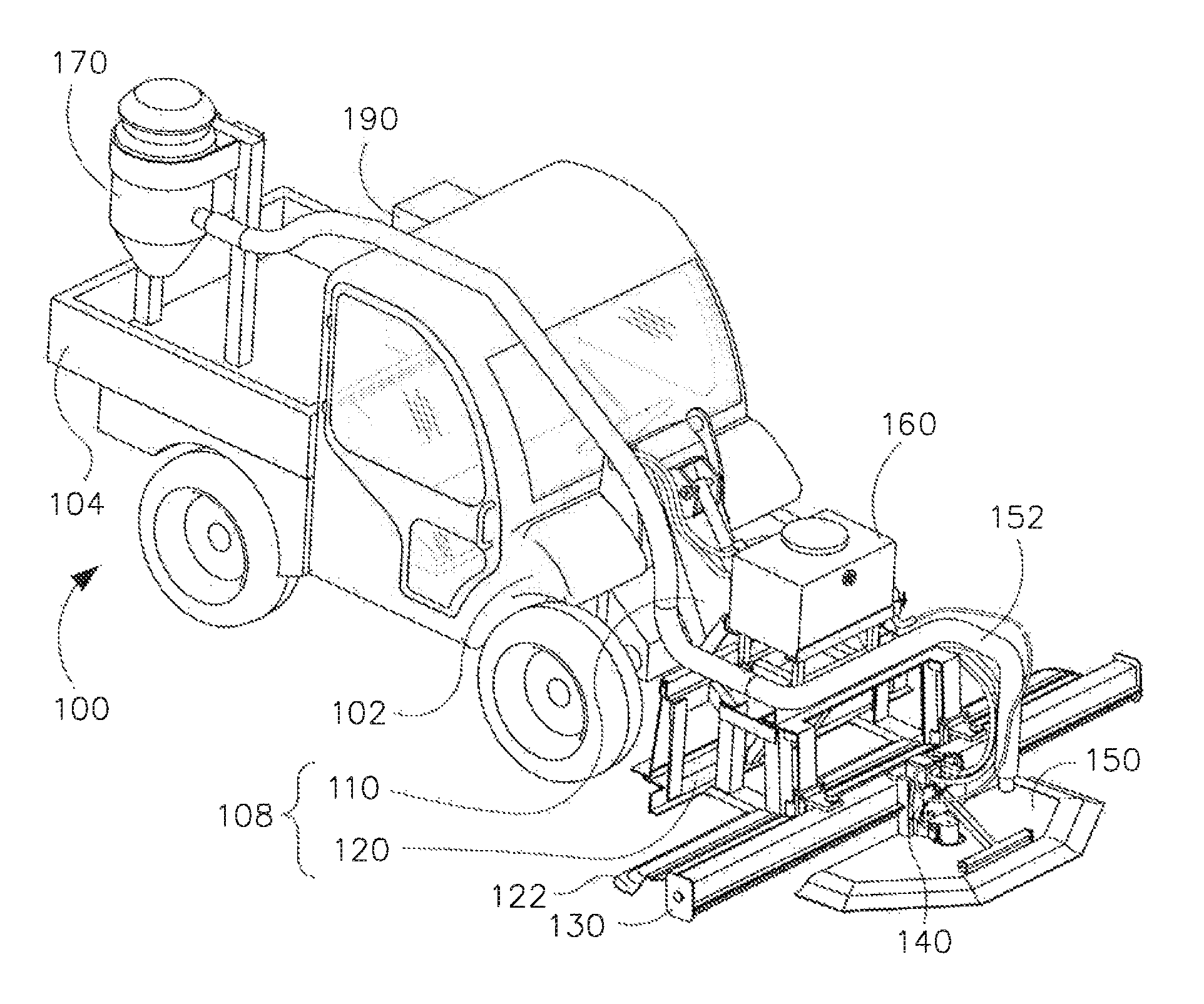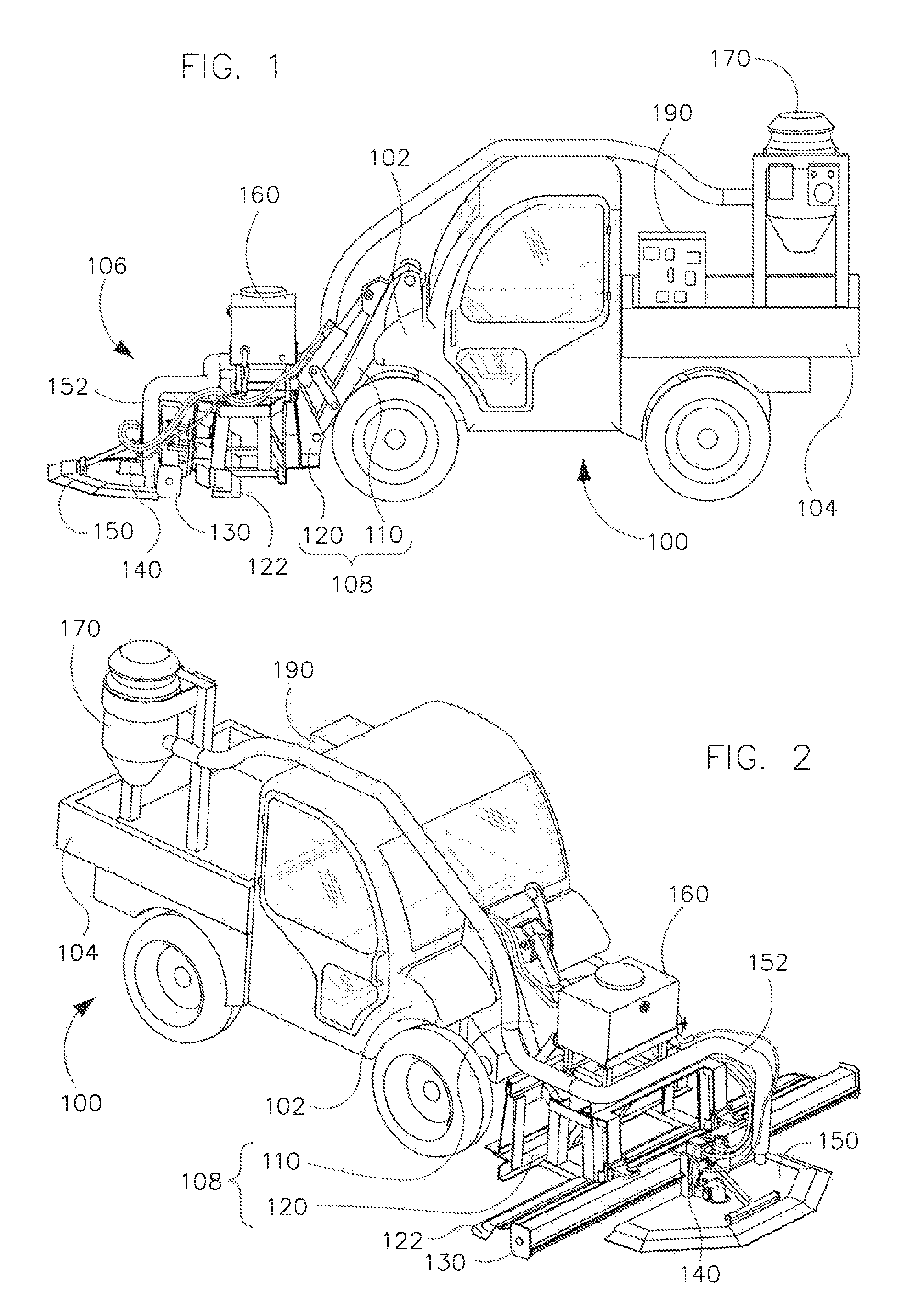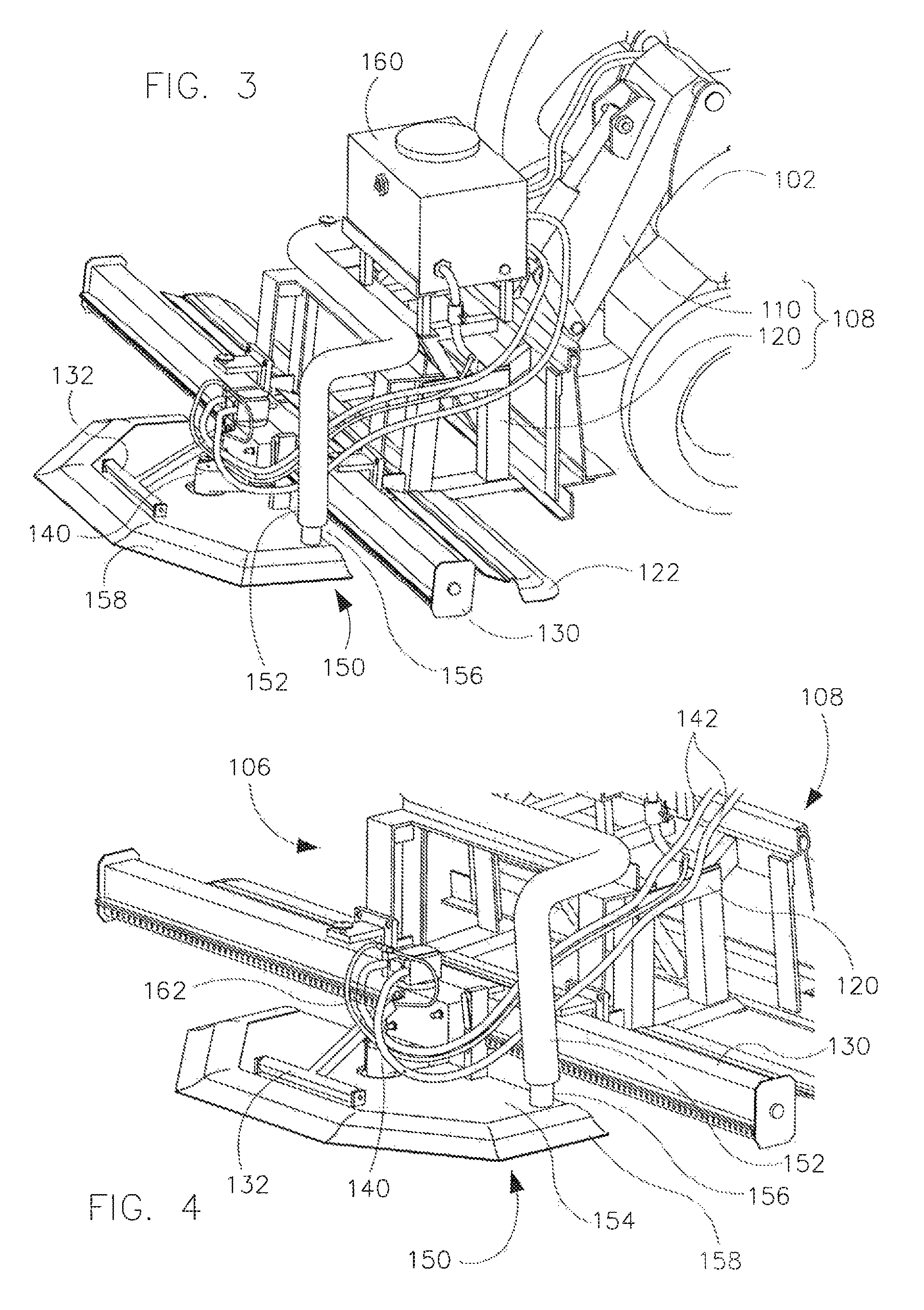Systems, machines, devices and methods for efficiently removing sidewalk trip hazards
a technology of system and equipment, applied in the field of systems, can solve the problems of time-consuming and proved too expensive, and achieve the effect of less time-consuming and less expensiv
- Summary
- Abstract
- Description
- Claims
- Application Information
AI Technical Summary
Benefits of technology
Problems solved by technology
Method used
Image
Examples
Embodiment Construction
[0007]One early solution to these problems, as shown in U.S. Pat. No. 5,116,162, was to grind away only the offending offset. However, this was time consuming, not significantly less expensive, and created substantial amounts of concrete dust, which is a health hazard itself. In response to these problems in grinding away the offending offset, as shown in U.S. Pat. No. 6,863,062, a further solution was to cut away the offending offset using a rotating concrete saw and blade, by plunging the blade into the top surface of the concrete slab. This solution avoided creating as much concrete dust, and the actual concrete cutting is less time consuming than grinding away the offending offset. However, moving the concrete cutting device disclosed in the 062 patent from one trip hazard location to the next and setting up that concrete cutting device at each trip hazard location was itself time consuming and complicated.
[0008]Other solutions directed to concrete cutting, such as those shown i...
PUM
| Property | Measurement | Unit |
|---|---|---|
| angle | aaaaa | aaaaa |
| width | aaaaa | aaaaa |
| perimeter | aaaaa | aaaaa |
Abstract
Description
Claims
Application Information
 Login to View More
Login to View More - R&D
- Intellectual Property
- Life Sciences
- Materials
- Tech Scout
- Unparalleled Data Quality
- Higher Quality Content
- 60% Fewer Hallucinations
Browse by: Latest US Patents, China's latest patents, Technical Efficacy Thesaurus, Application Domain, Technology Topic, Popular Technical Reports.
© 2025 PatSnap. All rights reserved.Legal|Privacy policy|Modern Slavery Act Transparency Statement|Sitemap|About US| Contact US: help@patsnap.com



